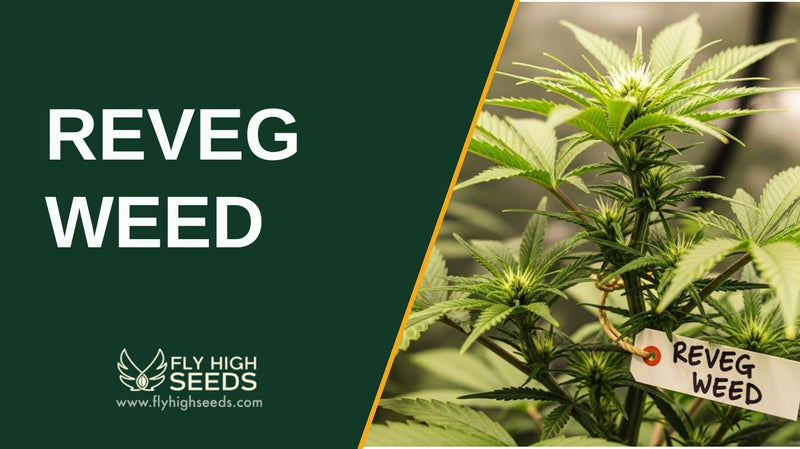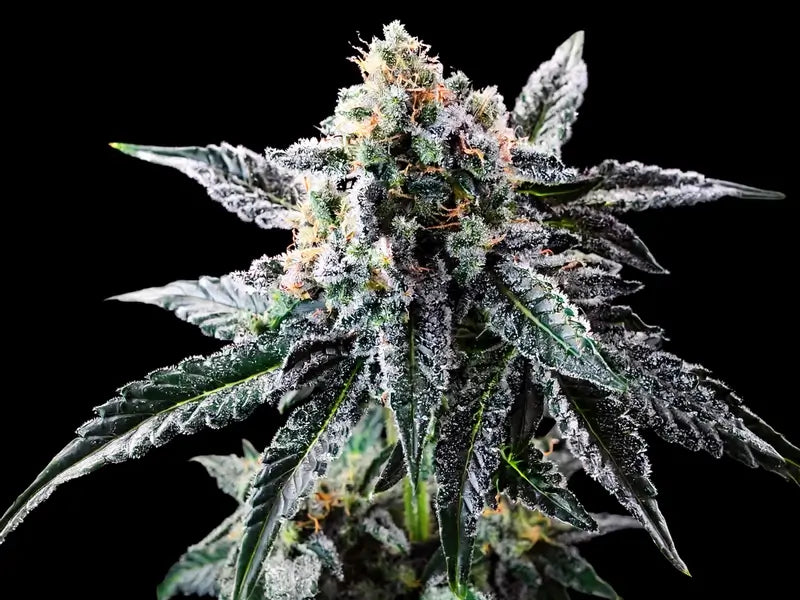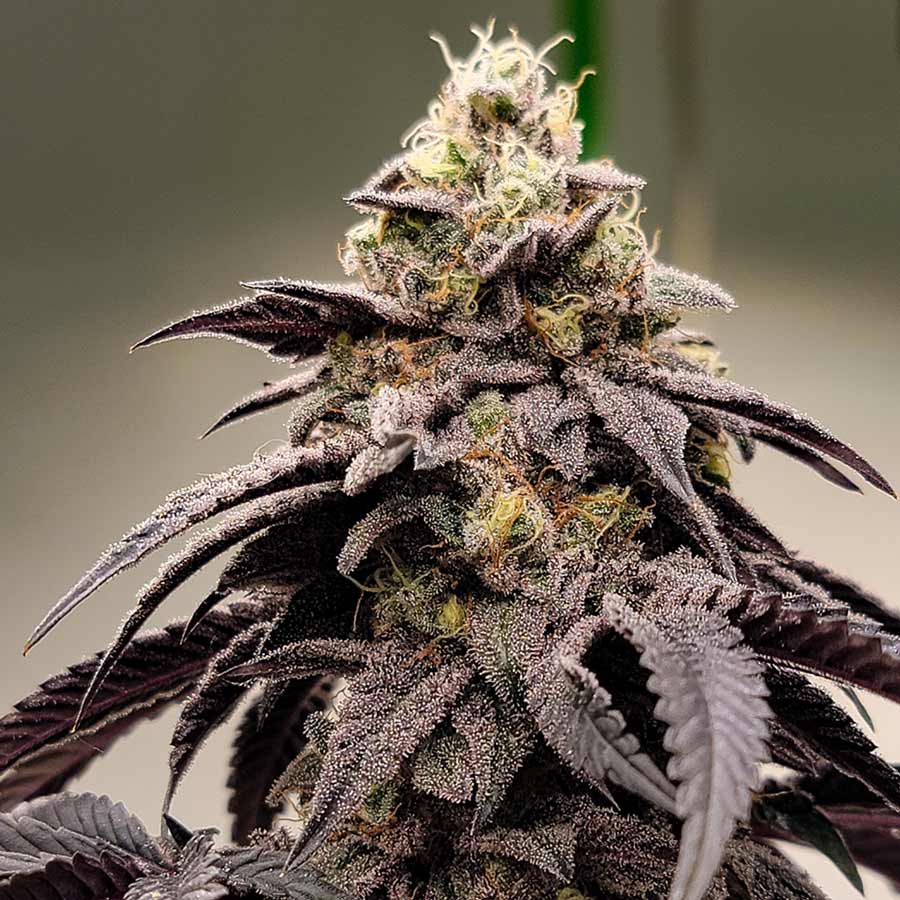How to Reveg Weed? [Pros & Cons]

Have you ever wished you could get another harvest from the same cannabis plant without starting from scratch? Re-vegging weed, or regenerating a cannabis plant after it has been harvested, makes this possible for a second harvest. This technique allows growers to save time, preserve genetics, and make the most out of their grow space, making it a real lifesaver.
In this guide, we’ll break down how to re-veg cannabis plants, including the importance of proper watering, and how to effectively grow cannabis, what to expect during the process, the benefits, and top tips for success.
What Is Re-Vegging Weed?
Re-vegging is the process of taking a cannabis plant that has already completed its flowering stage and encouraging it to return to its vegetation stage. Cannabis follows a life cycle: vegetative growth under 18 hours of light, flowering under 12 hours, and then harvest. However, because cannabis is photoperiod-sensitive, you can manipulate light cycles to trigger new vegetative growth even after a harvest.
When done correctly, the harvested cannabis plant will produce fresh shoots and new leaves, eventually becoming bushy and healthy, ready to flower for another round.
How to Re-Veg Cannabis Plants

Re-vegging starts at harvest. To give your plant the best chance to recover, leave plenty of the lower growth, including buds.
-
Leave Lower Growth During Harvest
Do not strip the plant bare. Leave 5–6 small buds and some healthy leaves on the lower parts. These will serve as growth points for regeneration.
-
Switch to a Vegetative Light Schedule
Return the plant to an 18/6 light cycle (18 hours of light, 6 hours of darkness). This signals the plant to stop flowering and start producing new leaves and branches.
-
Adjust Environmental Conditions
Keep humidity levels between 65–75% and maintain stable temperatures. These conditions mimic the vegetative phase and encourage growth.
-
Feed for Recovery
Provide nitrogen-rich nutrients and consider adding compost or worm castings to improve soil health. This supports new growth and strengthens the plant.
-
Be Patient
Re-vegging takes 4–6 weeks before you see strong new shoots. Smaller plants revert faster, while larger ones may need more care and extra weeks.
What Does a Re-Vegging Plant Look Like?
Don’t panic if your plant looks odd during the process; it can be a sign of accidental re-vegging. When cannabis reverts to vegetative growth, it often produces unusual single-blade leaves. Over several weeks, this will progress to three-blade, then five-blade leaves, and eventually normal foliage.
The plant might appear scraggly at first, but with time and proper care focused on the main stem , it will regain its vigor and look similar to when it was originally grown from seed, fully entering the vegetative state.
Benefits of Re-Vegging Cannabis Plants
Re-vegging offers several advantages for growers:
- Preserve Genetics – Keep your favorite plant traits without needing to start from seed or clone.
- Save Time and Resources – You skip the seedling stage and use the plant’s existing root system for faster growth.
- Clone Opportunities – Once recovered, the plant can act as a new “mother plant” for cloning.
- Cost-Effective Growing – Lower electricity and nutrient costs than starting new plants.
-
Rescue Plants – Even damaged plants can be revived if they grow healthy.
Re-vegging can be a lifesaver and game-changer for breeders and home growers alike.
Top Tips for a Successful Re-Veg: Grow Cannabis
- Leave Multiple Bud Sites: More growth points increase your chances of success.
- Start with Healthy Plants: Only attempt to re-veg plants with green, healthy foliage.
- Feed Wisely: Use nitrogen-rich nutrients to jump-start recovery.
- Be Patient: Large plants may take longer to revert—don’t rush the process fully.
-
Encourage Soil Life: Maintain healthy microbial activity with compost or organic additives.
Conclusion: Extend Your Harvest with Re-Vegging Grow Room

Re-vegging weed is a clever technique that can save time, preserve valuable genetics, and maximize yields, including bud growth making it crucial for growers. While it requires patience and proper care, the rewards are worthwhile. By understanding the light cycles, avoiding any light leak feeding needs, and recovery signs, you can successfully bring your harvested plant back to life for multiple harvests.
Want to learn more about cannabis growing techniques using a grow light?
Check out our other guides on cannabis growth cycles and best indoor grow setups to level up your cultivation skills.
FAQs About Re-Vegging Weed
1. How long does it take to re-veg a cannabis plant?
Re-vegging typically takes 4–6 weeks before you see strong new vegetative growth, which is a short time compared to starting from seed. Larger plants may take longer.
2. Can all cannabis strains be re-vegged?
Most photoperiod cannabis plants can be re-vegged, but some cultivars, especially those from a strong mother plant, respond better than others. Autoflower strains generally do not re-veg successfully because their growth cycle is time-based, not light-dependent.
3. Is re-vegging better than cloning?
Cloning is faster, but re-vegging is an excellent backup if clones fail to root or if you want to preserve a plant's buds after harvest.
4. Do I need to use special lights for re-vegging?
No, the same lights are used for the vegetative stage work for all plant branches. Could you ensure the plant receives 18 hours of light and 6 hours of darkness?
5. Can I re-veg a plant that was heavily harvested?
It isn’t easy. Successful re-vegging requires leaving enough lower growth (buds and leaves) for the plant to recover.



